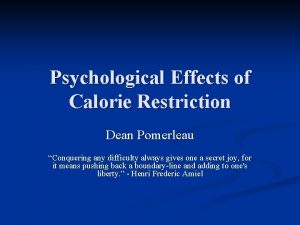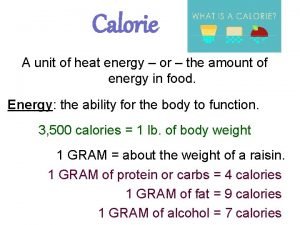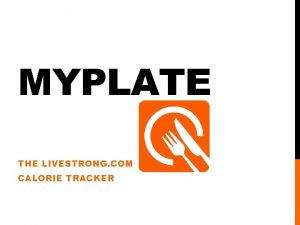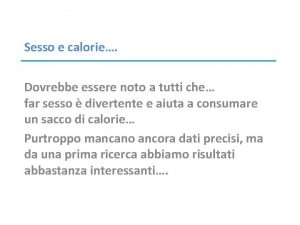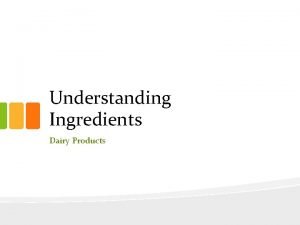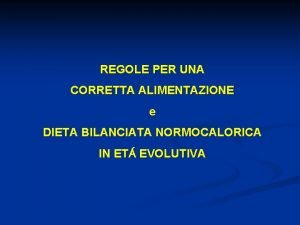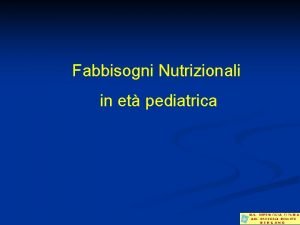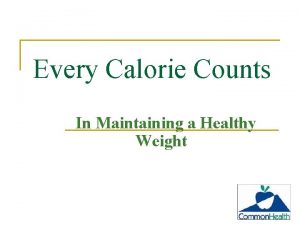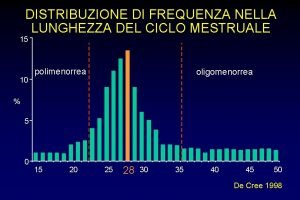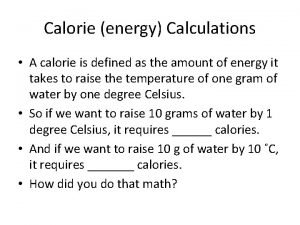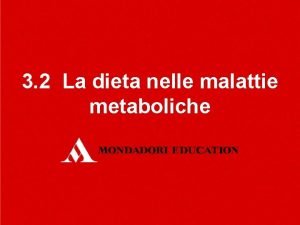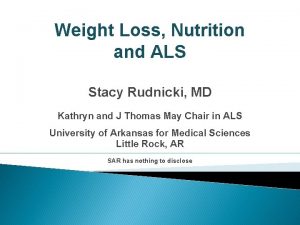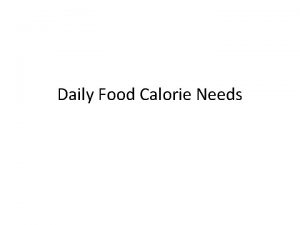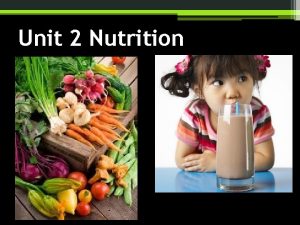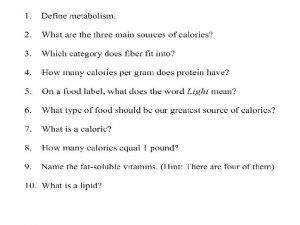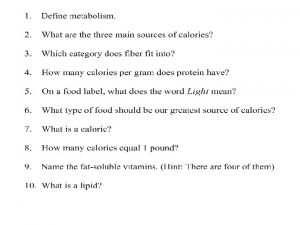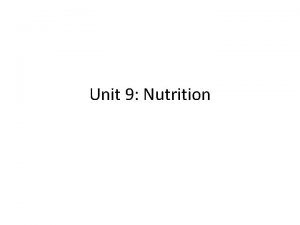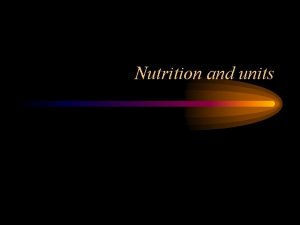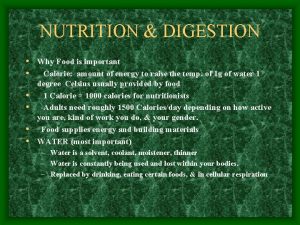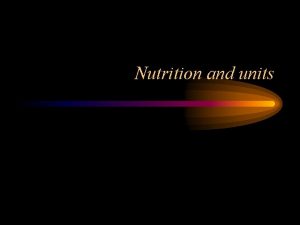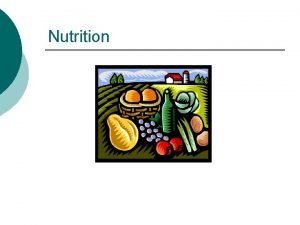NUTRITION Definition of a calorie A unit of
















- Slides: 16

NUTRITION • Definition of a calorie • A unit of measurement for energy • Metabolism • The rate at which calories are burned • Sources of calories • Carbohydrates • Fats • Protein

METABOLISM • The rate at which calories are burned. • Basal Metabolic Rate BMR



CARBOHYDRATES • Carbohydrates are the • • body’s preferred source of energy. Simple and Complex 55 -65% of daily calories should come from carbohydrates, most of which should be complex

Simple Carbohydrates • Sucrose (table sugar) • Fructose (Fruit) • Lactose (Milk) • Maltose (Grain) • Simple carbohydrates are like putting paper on a fire

Sources of Carbohydrates • Simple – Natural sugars • Fruits, veggies, milk, etc – Processed sugars • Table sugar, molasses, syrups, etc. • Complex – – – Pasta Seeds Legumes • Peas, beans, & potatoes – Vegetables – Fruits – Fiber ** Complex carbohydrates are like putting kindling on a fire

Benefits of FIBER -tough, stringy part of vegetables, fruits, and grains • Cannot be digested • Helps move waste through digestive system • Helps prevent constipation, appendicitis, and other intestinal problems • Helps prevent various types of cancer • Bulky foods; feeling of fullness, longer to chew

SOURCES OF FIBER • Fruits and vegetables (especially the skin) • Pasta • Bran • Brown rice • Oatmeal • Popcorn • Corn tortillas

FATS -Scientific name is lipid: fatty substance that does not dissolve in water • Saturated – Mainly animal sources – Solid or semisolid at room temperature • Unsaturated – Mainly vegetable sources – Liquid or oil at room temperature *** < 30 % of your calories should come from fat

Sources of Fat • Visible fat – Butter, margarine, vegetable oil, fat layer on meat and poultry • Hidden fats – Marbled in meat, chocolate, seeds, egg yolk, ice cream, cheese, cream soups, doughnuts • Food preparation – Frying and cooking with sauces

Roles of Fat • Carry fat soluble vitamins A, D, E, & K (see page 381) • Adds flavor • Protects vital organs • Insulates your body • Form of stored energy • Helps to satisfy hunger

PROTEINS • Vital part of every cell – Muscle, bone, teeth, skin, & blood all contain protein – “life could not exist” • Made of amino acids – – – • 20 different amino acids Your body can make 11 of the 20 “Essential amino acids” are the 9 your body cannot make • You must get them through your diet 10 -15 % of calories should come from protein

PROTEIN

Roles of Protein • To build and maintain all body tissues • To regulate many body processes (hormones) • To identify and destroy bacteria and viruses (antibodies) • Source of energy, however this takes away from its intended roles

Sources of Protein • Animal sources – – – – Fish Beef Poultry Eggs Milk Cheese Yogurt • Complete proteins because they contain the essential amino acids • Plant sources – Legumes – Seeds – Nuts • Incomplete proteins because no single plant protein has all the essential amino acids in adequate amount – See page 380
 Dean pomerleau
Dean pomerleau Différence entre calorie et kilocalorie
Différence entre calorie et kilocalorie 1 oz chicken
1 oz chicken Livestrong daily plate
Livestrong daily plate Composition dragibus
Composition dragibus Calorie sesso
Calorie sesso Cheese lactose chart
Cheese lactose chart Dieta normocalorica esempio
Dieta normocalorica esempio Calorie restriction
Calorie restriction Noci calorie
Noci calorie Laf nutrizione
Laf nutrizione Every calorie counts
Every calorie counts Fsh alto
Fsh alto Tabella laf
Tabella laf Calorie is defined as
Calorie is defined as Perdite di sangue in menopausa
Perdite di sangue in menopausa Harris-benedict -basal metabolic rate calorie calc
Harris-benedict -basal metabolic rate calorie calc
